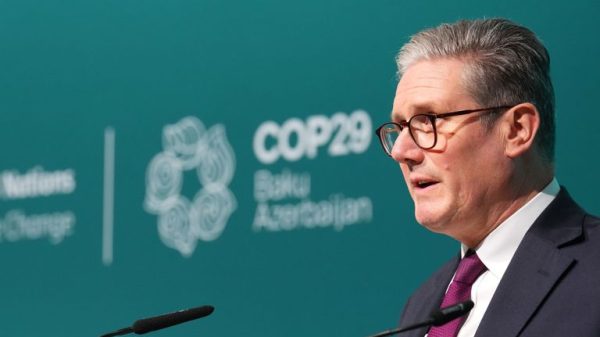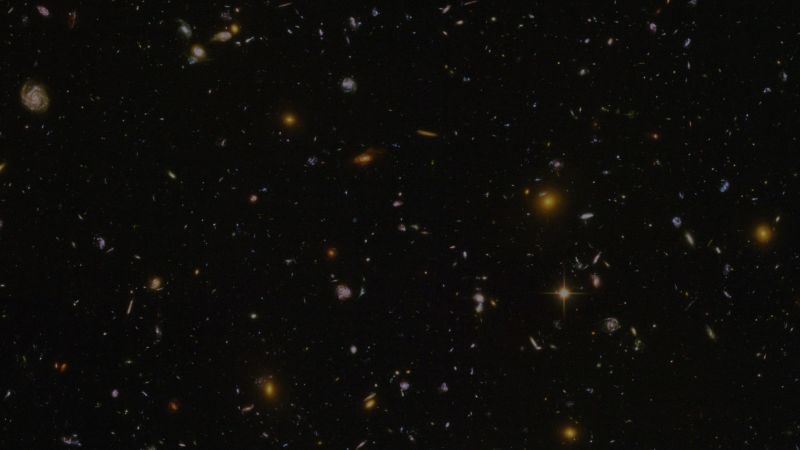Boeing’s spaceflight program may reach a significant milestone Monday night with the launch of its Starliner spacecraft, carrying — at long last — two NASA astronauts to orbit.
The mission, dubbed the Crew Flight Test, could take off as soon as Monday at 10:34 p.m. ET from Cape Canaveral Space Force Station in Florida.
Live coverage of the event will stream on NASA channels beginning at 6:30 p.m. ET Monday, according to the space agency.
The occasion is a decade in the making — the culmination of Boeing’s efforts to develop a spacecraft worthy of ferrying astronauts to and from the International Space Station under NASA’s Commercial Crew Program.
Development hang-ups, test flight problems and other costly setbacks have slowed Starliner’s path to the launchpad. Meanwhile, Boeing’s rival under NASA’s commercial crew program — SpaceX — has become the go-to transportation provider for the space agency’s astronauts.
Now, NASA and Boeing have finally deemed the Starliner spacecraft ready for its ultimate test: allowing astronauts to test-drive the vehicle in outer space.
Veteran NASA astronauts Suni Williams and Butch Wilmore will be on board Monday’s mission, riding Starliner to the International Space Station for a weeklong stay.
Throughout their flight, Wilmore and Williams will conduct a series of tests, including briefly taking over the controls of the autonomous spacecraft and evaluating how the vehicle operates for astronauts.
A smooth flight could be a winning moment for Boeing’s spaceflight program and the company overall, which has been in the hotseat due to issues with its commercial airplane division.
Here’s what to know about Starliner’s journey before its historic crewed test flight.
The human component
Officials at Boeing have sought to make clear that Starliner operates separately from the sector at the company responsible for commercial aircraft. And the Starliner team’s primary interest is in ensuring a smooth test mission and crew safety, according to Mark Nappi, vice president and Starliner program manager at Boeing.
“We have humans flying on this vehicle. We always take that so seriously,” Nappi said during a news briefing last week. “I spent my career in this business, and it always has been the top of the list.”
The two Starliner astronauts have waited years for the spacecraft to be deemed ready to carry crew. After several astronauts rotated in and out of assignments on Starliner’s Crew Flight Test, Wilmore received his appointment in 2020. NASA moved Williams onto this flight in 2022 after initially assigning her in 2018 to a later Starliner mission.
“We’ve had a couple (of) launch dates, and we’ve been like, ‘OK, we’re ready to go,’” Williams said at a Wednesday news conference. “But now it’s like, heck — five days. It is actually, finally real, and I sort of have to pinch myself a little bit to understand, actually, we’re going.”
At a news briefing last month, Steve Stich, the program manager for NASA’s Commercial Crew Program, said that NASA required Boeing and SpaceX to meet a certain threshold regarding the risk the mission would result in the death of astronauts — 1 in 270.
“Boeing exceeds that number with a 1 in 295 loss of crew number,” he said.
Starliner’s rocky path
Boeing received a NASA contract to build Starliner in 2014 at the same time the space agency selected SpaceX to build its Crew Dragon capsule.
NASA gave the companies deals worth up to $6.8 billion combined, hoping that Boeing and SpaceX would both have their capsules ready to fly as soon as 2017.
That expectation didn’t pan out.
SpaceX took longer than planned, flying the inaugural astronaut launch of its Crew Dragon capsule in the summer of 2020. It has since completed 13 missions to orbit for NASA astronauts and paying customers.
But Boeing — despite NASA officials initially believing the Starliner would be ready before SpaceX’s Crew Dragon — faced years of additional delays, setbacks and added expenses that have cost the company more than $1 billion, according to public financial records.
Notably, the first Starliner test mission, flown without crew in late 2019, was riddled with missteps. The vehicle misfired in orbit, a symptom of software problems that included a coding error that set an internal clock off by 11 hours.
A second uncrewed flight test in 2022 uncovered additional software issues and trouble with some of the vehicle’s thrusters.
Those hang-ups delayed the inaugural crewed flight into 2023. But then a new slate of problems arose — the spacecraft’s parachutes had some components that were weaker than expected, and tape in the vehicle was found to be flammable.
Boeing then had to remove more than a mile’s worth of that tape and complete additional tests of the parachutes.
Finally, after a decade of development, NASA and Boeing have cleared the vehicle to fly astronauts.
‘Everything’s not going to be absolutely perfect’
Williams and Wilmore have taken a measured approach when responding to questions about the Starliner spacecraft’s development woes.
“I understand it when you say ‘setback,’” Wilmore said during the recent news conference. “But honestly, with all the discovery — that’s what we would term it — that we’ve had, it’s been steps forward.
“It’s not been a setback, it’s been pressing forward,” he said. “And our families have lived that with us.”
Williams added that she is prepared to go into Monday’s mission with the expectation that small issues may arise.
“We always find stuff, and we are going to continually find stuff,” she said Wednesday. “Everything’s not going to be absolutely perfect as we fly the spacecraft. And that’s really what our goal is. We’ve got it to a point — all of us, big team — got it to a point that we feel very safe and comfortable with how this spacecraft flies, and we have backup procedures in case we need those.”
“We’re here,” Williams said, “because we’re ready.”



























